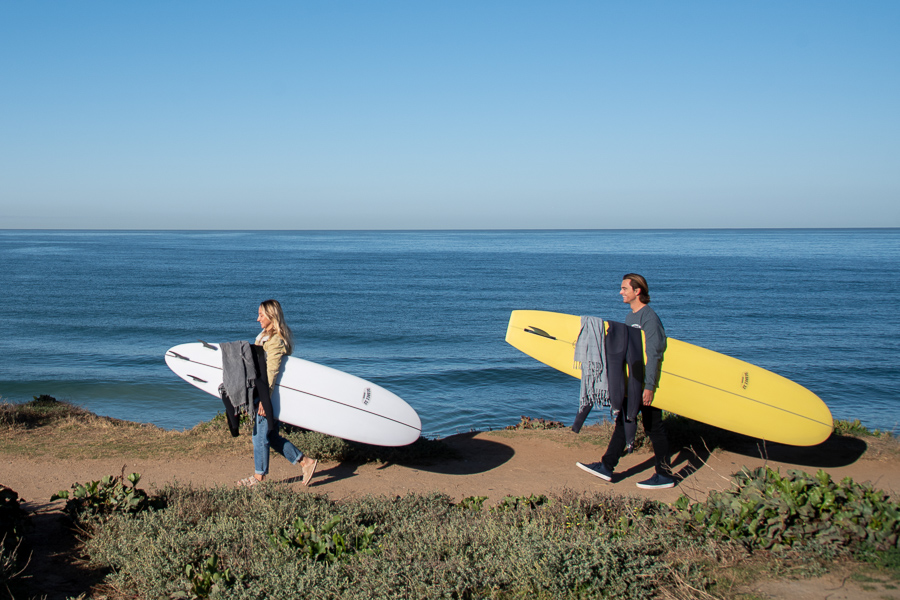
Learning how to surf can be one of the most exciting and life-changing decisions you’ll ever make, but it can also be a long, slow, frustrating process. Not only do you have to learn to balance on a board and maneuver it, but you also have to gain ocean knowledge, develop good wave-reading skills, and have perfect timing. And due to the ever-changing surf conditions, you don’t have a consistent forum in which to practice from one day to the next.
Despite all of the challenges, surfing is an extremely rewarding pursuit, particularly for those who put in the effort and time and develop proficiency. There is little in life that feels better than surfing down the line on a clean, green face (except, perhaps, for driving through a spitting barrel, but that’s still a ways off, so let’s focus on baby steps), and the first time you do so will be an experience you always remember.
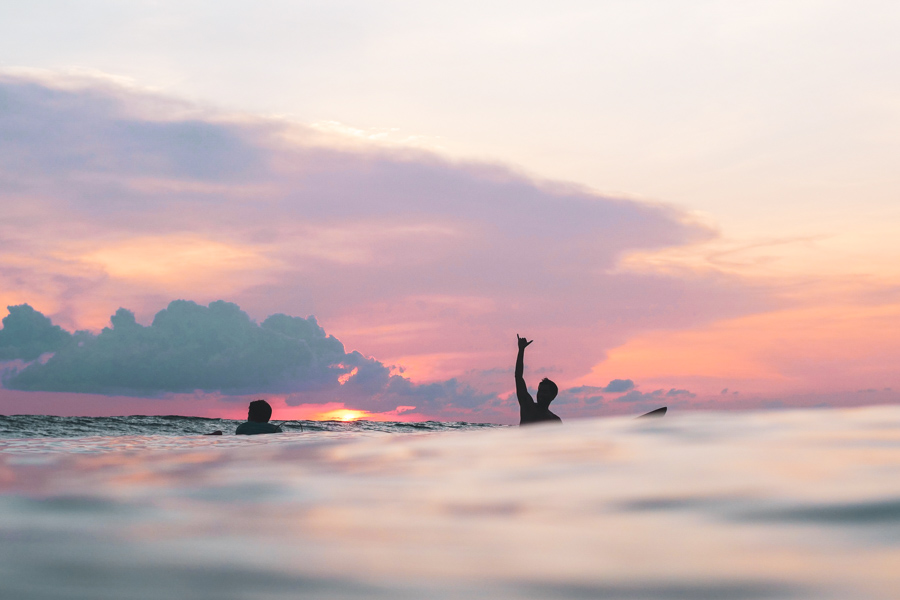
The best way to learn how to surf is to get started with some foundational basics (we highly recommend taking lessons from a skilled instructor) and then practice as much as possible. That said, there are many things that are important for beginner surfers to know when it comes to navigating the ocean, lineup, and respecting other surfers.
This guide will help you get familiar with the many elements of learning how to surf so that you can be the best kind of beginner surfer (one who has good surf etiquette and avoids pissing other surfers off… more on that later). Being a knowledgeable and respectful beginner surfer will not only help you avoid unpleasant confrontations, but you’ll have more fun along the way and also progress faster.
Here’s the lowdown on the top things you need to know when learning how to surf!
Want to Learn to Surf in a Stunning Destination?
We create unforgettable beginner surf trips around the world, crafted with local know-how and surf expertise. Go custom with our Tailor-Made Surf Trips designed around your style and crew, or jump right in with an expertly curated Ready-to-Book Surf Trip.
How to be a Good Beginner Surfer
(AKA Don’t Be a Kook)
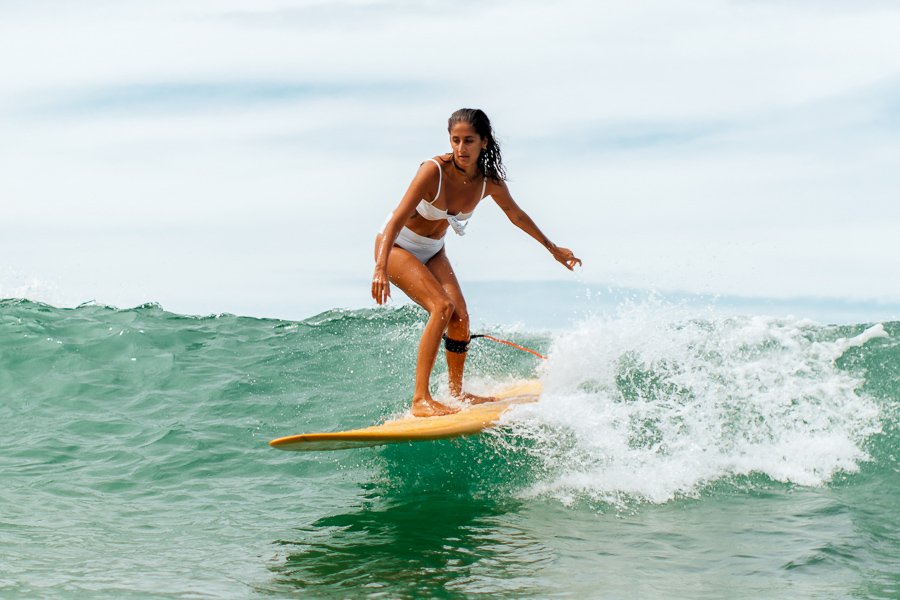
Like most pursuits, surfing is difficult to learn, so at first, you need to resign yourself to being a bit of a kook. In case you don’t know what a kook is, it’s slang for a beginning surfer—but it can also be a derogatory term for someone who is clueless and rude in the water.
While it’s okay to be the first kind of kook (we have all been beginners at one point), you don’t want to be the second kind—a person who gets in the way, ruins people’s waves, endangers themselves, and commits lots of faux pas—regardless if they are intentional or not. Follow these surfing tips to be a good beginner surfer:
1 • Choose appropriate waves to learn and surf.
We all want to ride the best waves at the best spots, but when you are learning, there are certain lineups that are simply beyond your ability level. At these waves, you are likely to get in the way and possibly get hurt, and you are also much less likely to catch waves and practice getting to your feet.
Ask experienced surfers what waves you should be surfing as a beginner, and stick to those lineups until you have developed a solid level of proficiency. And as you progress in your surfing journey, make this an ongoing practice, only paddling out to spots that are within your wheelhouse.
You will find that you get way more waves when you are surfing at spots that match your skill level, and you will also avoid pissing people off by messing up their waves.
2 • Don’t sit in the pack.
When you first start surfing, you will likely be tempted to paddle out to where everyone else is sitting and waiting for waves. After all, that must be where the best rides are, right? The problem is, you don’t yet have the skills or ocean knowledge to compete with the pack or stay out of people’s way.
This means that you are unlikely to get many waves, and very likely to mess up someone’s ride (or worse, hit someone with your board). Stick to the inside when you are learning, catching whitewater in zones where you won’t interfere in other people’s waves.
As you start to improve and move out to the main lineup, spend some time on the shoulder, waiting for scraps. Waves are typically easier to catch on the shoulder, and you will be less likely to get in people’s way. That being said, when you are surfing on the shoulder, it is important that you don’t burn anyone! Which brings us to tip number three…
3 • Don’t drop in.
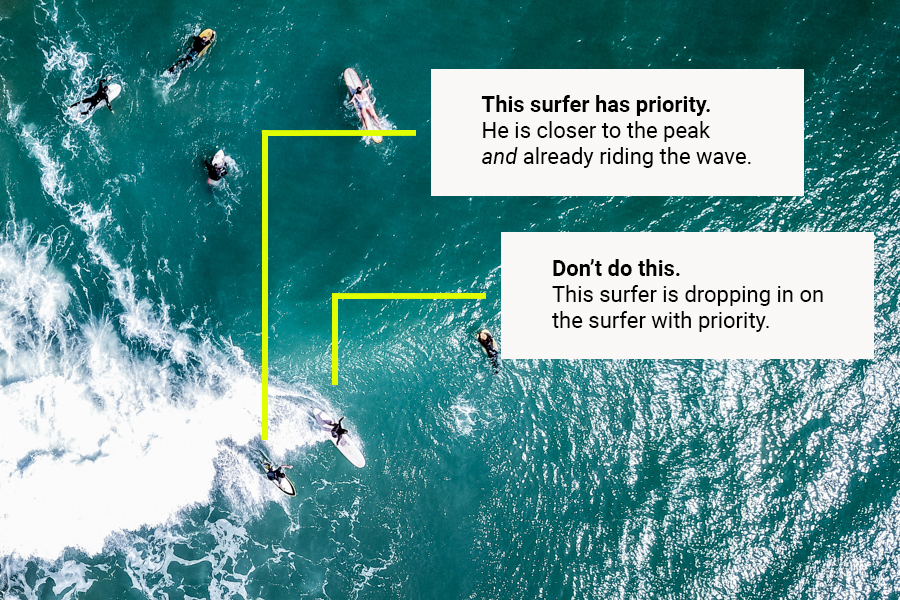
Dropping in on another surfer is a cardinal sin of surfing and should be avoided at all costs. Just don’t do it. Dropping in is when a surfer paddles into a wave that is already being ridden (i.e. a surfer with priority is up riding a wave and another surfer farther down the line takes off on the same wave in front of the priority surfer, ultimately getting in the priority surfer’s way and ruining their wave).
In most surfing lineups around the world, there is a priority system based on who has been waiting the longest and/or who is sitting farthest out. You will know whose turn it is to catch a wave because they will be deepest (and thus able to stand up before anyone else).
Once someone is up and riding a wave, it is very bad etiquette to take off in front of them (not to mention quite dangerous). When you are sitting on the shoulder catching waves, always make sure to look over your shoulder to see if anyone is already riding down the line toward you. If they are, don’t go!
It is a bit frustrating at first to see everyone surfing from deeper and getting all the waves, while you wait for the scraps, but once you start to improve and are able to compete and catch waves consistently, you will be able to sit deeper and get more waves as well! (We’ll go into some more details about dropping in below in Surf Etiquette.)
4 • Don’t back-paddle.
Once you have a basic level of competency and are ready to join the pack and sit deep, it is important to not back-paddle people. Back paddling means paddling past them to sit deeper so that you can catch the next wave, even if it is not your turn.
Unfortunately, a lot of people do this—including competent and even experienced surfers—because they are greedy and don’t respect the other people in the lineup. But just because they are doing it doesn’t make it right. On crowded days it can get a bit confusing and hard to know whose turn it is, and you are likely to see people paddling past each other and stealing priority, but on most days you know who has been waiting the longest, and it’s poor form to back-paddle them and take the next wave.
5 • Stay out of the way while paddling out.
This is a tricky one, especially for beginners who are trying to surf crowded or heavy waves (which, if you follow tips one and two, shouldn’t be a problem!). The person riding the wave always has the right of way, and it is the responsibility of the person paddling out to get out of their way.
You can typically do so by paddling out in the channel or on the shoulder, but there will be times when you find that you are in the wrong place at the wrong time, and have to make a decision between getting in someone’s way or paddling behind them and getting smashed by the wave. When this happens, always paddle behind them and take your beating!
While getting rolled by the whitewater or clipped by the lip isn’t fun for anyone, it’s way better than ruining someone’s wave, and will gain you some respect from the rest of the lineup.
Top Beginner Surfer Mistakes
(And How to Avoid Them)

There are a number of common, unnecessary mistakes that beginner surfers make that slow their progression and often lead to frustration rather than fun. The best way to improve is to learn from other people’s mistakes rather than making them yourself, so pay close attention to this list and try to avoid falling into these common traps.
1 • Picking the wrong surfboard.
One of the most common mistakes of beginner surfers is riding the wrong surfboard for their ability. Many beginner surfers attempt to surf on surfboards that are designed for more advanced surfers. In the most simple terms — the shorter and smaller the surfboard, the more difficult it is to catch waves and surf, and the longer and bigger the surfboard, the easier it is to catch waves and surf.
The big mistake is when beginner surfers attempt to surf on surfboards that are too small for their surf level which results in more difficulty paddling, catching waves, and balancing… which results in catching fewer (if any) waves, getting frustrated, and progressing much slower.
Because at the end of the day, the more waves you surf, the faster you will progress, and the fewer waves you surf, the slower and more painful your progression will be. Surfing is challenging enough — don’t make it harder by choosing the wrong board!
- PRO TIP: We’ve outlined some high-level notes below, but for the full story, check out this Guide to the Best Beginner Surfboards >>
Beginner surfers often don’t know the difference between the various different types of surfboards available, which isn’t a surprise, because there are a lot of options in your local surf shop and they can be quite confusing! Try to avoid falling into peer pressure and buying the boards that everyone else is riding. After all, most of the people you see surfing will be much more experienced than you, so the boards that work for them might not be appropriate for you at all!
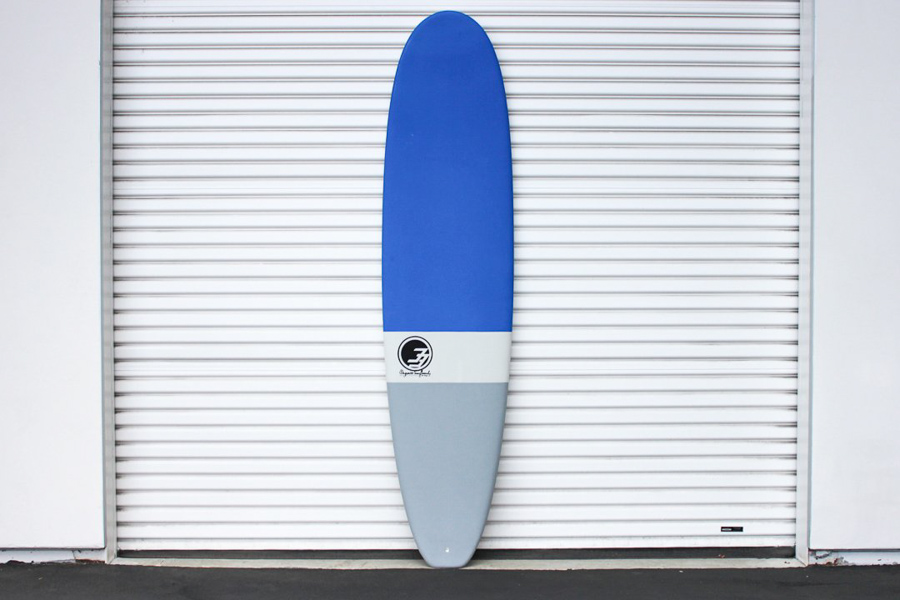
Generally speaking, the best beginner surfboard is stable, paddles well, and gets you lots of waves—which basically disqualifies high-performance shortboards, which is what many people surf. Instead, look for a longboard or a funboard, both of which have a lot of volume, making them stable and good paddlers.
You might even opt for a soft top surfboard when you are first starting, as these boards are cheaper, safer, and less likely to get damaged (or damage other people), but still provide the stable platform that you need to learn on.
Once you are catching lots of waves (open-faced waves, not whitewater) and riding down the line proficiently, you can then consider graduating to a shorter board that still has a lot of volume, such as a mid-length or fish surfboard. Then, when you get to the point where your board is the limiting factor in your performance (rather than your ability), it is finally time to progress to a high-performance shortboard.
Of course, if you find that you really enjoy trimming, you might instead decide to stay on longboards for your entire surfing career! Despite what you see in the media, there’s nothing wrong with riding longboards. The only important thing is that you have a board that is fun for you.
2 • Surfboard abuse.
Surfboards are fragile tools, so you want to take good care of them. Be aware of your surroundings when transporting and carrying your surfboard to avoid hitting your board and getting dings. Keep an eye out for dings, and always get them repaired immediately. Any hole in the glass of your board allows water into the foam, which is quite damaging and takes a lot of effort to repair.
If possible, wash your board with fresh water after a surf, as there are microscopic creatures in saltwater that can degrade the glass on your board and shorten its life.
Try to avoid leaving your board out in the sun, and you also don’t want to leave it inside your car on a hot day, as the glass can delaminate and the wax will almost certainly melt. Speaking of which, try to avoid lying your board down on its deck when you are at the beach because getting sand out of your wax is a nightmare.
3 • Not enough sun protection.
This one should be obvious, but you’d be surprised how many people make the mistake of not putting on enough sun protection and getting absolutely fried. No matter how good you think your tan is, you can still get sunburned—especially when you start catching waves and getting excited, and decide to stay out all day long.
Wear adequate sunscreen and consider covering up your back with a t-shirt or rash guard. As mentioned above, you also want to protect your board from the sun (and other elements) when it’s not being ridden, which means storing it in the house, away from windows.
4 • Paddling out in the wrong place.
Virtually everyone does this at some point when they are learning, and it takes a while to figure out lineups and where the best zones for paddling out are. But by taking a few minutes to study the lineup and see where other people are paddling out, you can start to figure out how the ocean works and where you want to paddle out.
Remember that any water that comes toward shore in the form of a wave has to go back out to sea somewhere—and that somewhere is usually in the channel or down at the bottom of the point. If you try to paddle out in the rip (where the water is flowing back out), you will make it to the lineup much more quickly. On the other hand, if you try to paddle out in the middle of the lineup, you are likely to take a bunch of waves on the head and get in people’s way.
Unfortunately, it’s not always as simple as paddling out on the shoulder. For instance, point breaks typically have strong current pushing down the line, which means that if you paddle out at the bottom of the wave, you will make it out past the lineup, but will likely have a difficult time paddling against the current up to the top of the wave. This is another reason why it’s important to only surf waves that are within your skill level (beginner waves will often have easier paddle-outs and less current).
5 • Giving up too soon.
No matter how excited you are or how good you are at other sports, surfing is going to be very challenging at first. The most important thing is not to give up. The fastest way to learn is to go as often as possible, and once you start catching waves, every little bit of progress will make you fall in love with surfing all over again. Just get past the first few days, and don’t give up!

Want to learn to surf faster? Go on a vacation to a surf camp! Surf camps are the best way for beginner surfers to make serious progress because you’ll get daily surf lessons and guidance from surf coaches every step of the way. Check out The Best Surf Camps >>
Best Surfboards for Beginners

As we discussed earlier, a lot of beginner surfers feel peer pressure (and/or think it’s cool) to ride modern, high-performance shortboards. They see these boards in the surf media, in lineups, and in friends’ quivers, and think that they need to ride shortboards too. But when you’re first getting started, a shortboard is the last thing you need.
Of course, it’s possible to learn on a shortboard, but due to the reduced volume and lack of paddle power, you will catch far fewer waves if you do so. A board with more volume, on the other hand (such as a longboard, funboard, or soft top version of either) will maximize your wave count, which means more opportunity to learn.
During your first year, learning to surf is 80% positioning, ocean knowledge, and paddling, and only around 20% riding the board. Once you have a good understanding of how the ocean works and have mastered paddling, takeoffs, and going down the line, then it’s time to start focusing on your actual performance on a surfboard.
This is when you decide if you want to pursue longboarding, shortboarding, or (depending on the conditions) both. At this point, you will want to start expanding your quiver to include boards with specific performance characteristics, such as high-performance shortboards. But for the first year, go with something that is big, high volume, and forgiving. Check out the best beginner surfboards.
Best Beginner Surfboards >>
Surf Gear
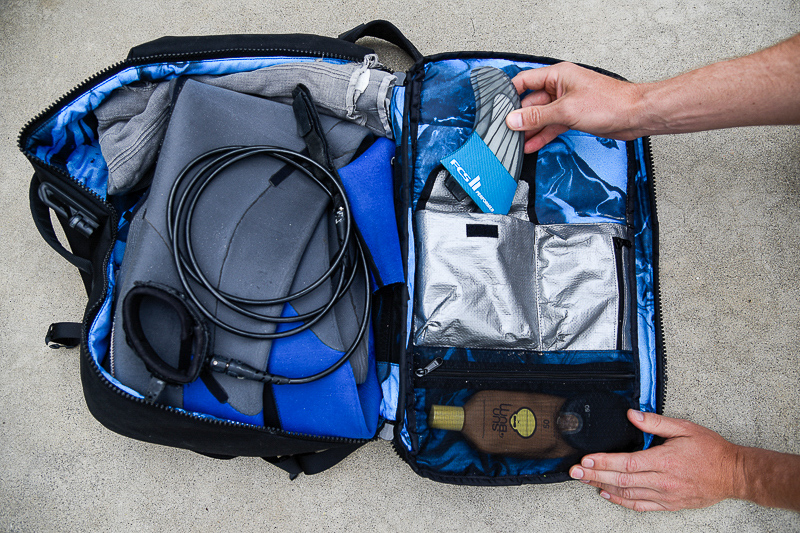
In addition to a surfboard, you will need a number of other surf gear to make the best use of your time in the water. Consider getting the following equipment (the first three of which should be considered mandatory):
Leash
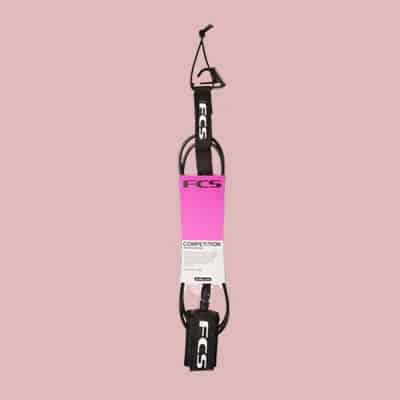
Your leash is going to be your best friend, especially in the first year as you are learning to surf. Not only will it keep you from having to swim after your board every time you wipe out or don’t make it under a wave, but it will also save you from endangering other people with your loose surfboard bouncing in the white water.
Don’t get suckered into the thin, trendy comp leashes—when you are learning, the drag caused by your leash is the least of your worries. If you are starting out on a longboard, get a hefty 10-foot leash (ankle or shin cuff are both fine). If you are on a shortboard or funboard, get a 6-foot or 7-foot leash with at least regular thickness, if not a big wave leash (which tends to be thicker and stronger).
Wax
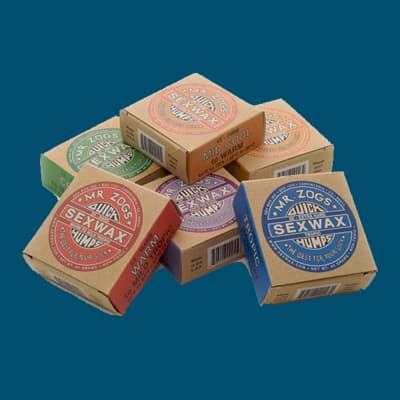
Hopefully, you know by now the difference between surf wax and ski wax, but if not, here’s the most important thing: surf wax goes on the deck of the board, not the bottom! Wax comes in a variety of formulas (tropical, warm, cool, cold, and very cold) that correspond to the temperature of the water you are planning to surf.
The warmer the formula is, the harder the wax is (because soft wax tends to melt in warm water), whereas cold water wax tends to be softer (because hard wax gets slippery in cold water). It is a good idea to put a base coat of hard wax on your board first (you can buy base coat, or just buy a bar of tropical wax, which is essentially the same thing), then apply a layer of appropriate temperature wax before every surf session.
Make sure not to leave your board out in the sun, especially deck up, or your wax will melt off and make a mess. In the same vein, don’t place your board deck-down on the beach, or you will have a wax job full of sand. You may also want to buy a wax comb to rough up your wax before sessions, especially if you surf in cold water.
Sunscreen
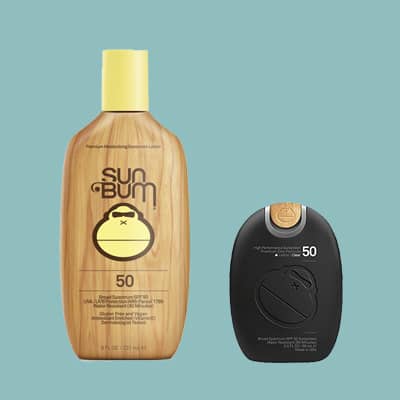
We can’t emphasize enough how important proper sun protection is. Not only are you getting solar rays from above, but the sunlight also reflects off the water and comes up at you from below. Sunburn is a great way to ruin a session, and skin cancer is no laughing matter. Invest in a good base sunscreen (50 SPF) for your body and face, and then get a stick of face-specific sunscreen as well to layer over the base sunscreen. Apply 15 minutes before you get in the water, and reapply any time you stop for water or food.
Wetsuit
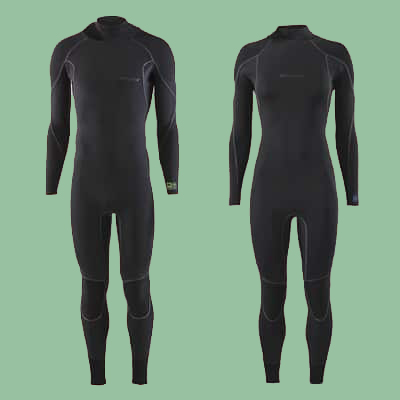
If you are surfing in cool or cold water, a wetsuit is absolutely essential—and this is one area where you don’t want to go with the cheapest option, even if you are a beginner. Buy a used board, used leash, used just about anything, but when it comes to your wetsuit, get something quality. The warmer you stay, the more you will enjoy your time in the water and the more you will surf, which means learning and improving faster.
Best Men’s Wetsuits >>
Best Women’s Wetsuits >>
Rash Guard (optional)
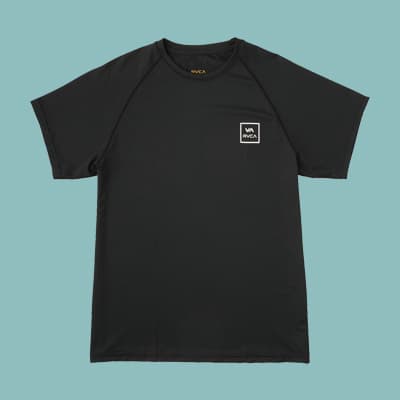
Rash guards aren’t completely necessary, since t-shirts can do the same job, but t-shirts tend to be a bit loose and abrasive, and often let a few UV rays through. Although some rash guards only provide partial UV protection, most fully block the sun’s rays, making them a great way to prevent sunburn on your back.
Deck Pad (optional)
Deck pads aren’t really useful for longboards or funboards, but they are great on high-performance shortboards, so once you are ready to graduate to more aggressive boards, consider adding a deck pad on the tail.
Where to Surf
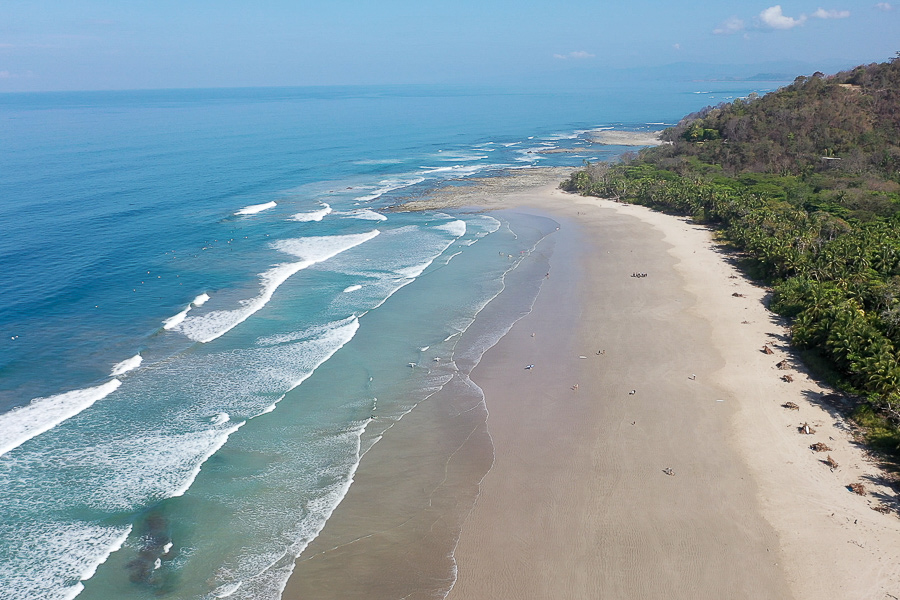
Choosing the right place to surf is one of the most important decisions a beginner surfer will make. You will likely find yourself tempted to surf the most crowded spots — after all, if everyone is out there, it must be good! But good for everyone else is not necessarily good for you.
The best beginner waves are soft, slow, and have a well-defined channel. These waves aren’t great for advanced surfing, so they are often ignored by intermediate and expert surfers, but they are great for learning the basics because they are forgiving and user-friendly.
Look for soft, rolling waves in the knee- to chest-high range, and ask around for advice if you don’t know what good beginner waves look like. While locals will often keep the best surf spots a secret, they will typically be happy to point you in the direction of beginner spots, so don’t be afraid to ask. Surf shops are a great place to get this type of information as well.
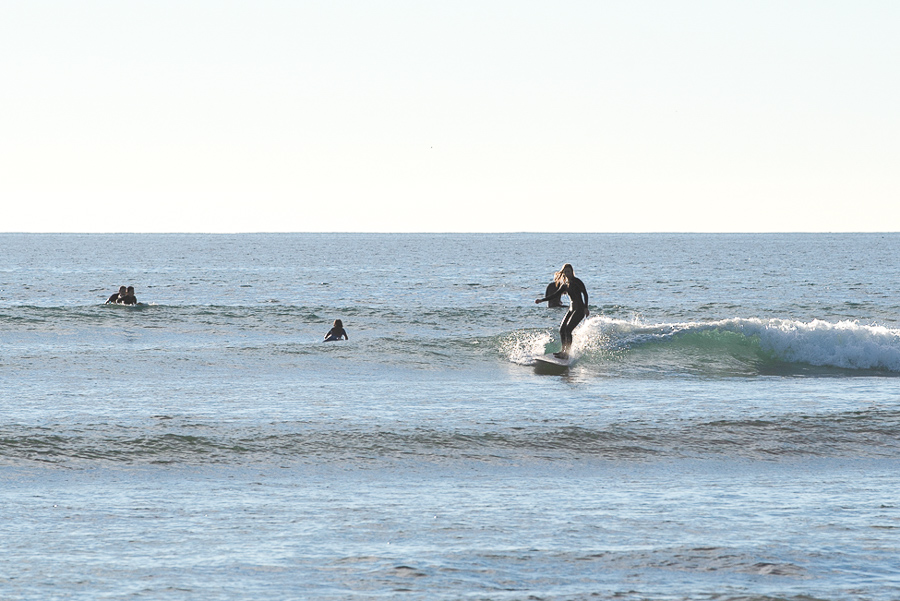
We’ve mentioned numerous times the importance of learning to read the ocean and waves. You will likely find this to be the most difficult part of learning how to surf, and you simply have to put in your time before you start to understand how lineups work and where and when waves will break.
Beginner waves will break more slowly, which means a larger takeoff zone, while more advanced waves will break abruptly and have very condensed takeoff spots. Stick with easy waves to begin with, and slowly progress to more advanced waves as your skills increase.
It is also important to know your limits when it comes to the ocean. While some beaches have lifeguards watching out for you, in many places you are on your own. Always check the surf report and forecast before paddling out so you know if the swell is dropping, holding steady, or rising. The last thing you want to do is paddle out expecting waist-high waves, and then watch the swell triple in size in 30 minutes, putting you way outside of your comfort zone.
Remember, the ocean is huge, powerful, and merciless. Know your limits, and if in doubt, don’t paddle out.
Want to Learn to Surf in a Stunning Destination?
We create unforgettable beginner surf trips around the world, crafted with local know-how and surf expertise. Go custom with our Tailor-Made Surf Trips designed around your style and crew, or jump right in with an expertly curated Ready-to-Book Surf Trip.
Surfing Etiquette
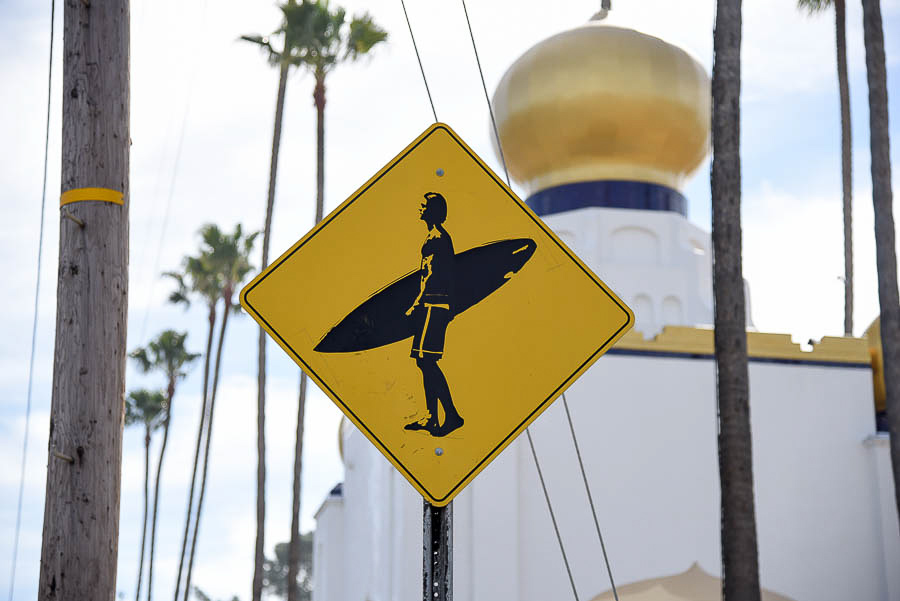
There are no umpires in surfing making sure you follow the rules. Instead, there are unwritten rules and grumpy locals who might want to fight you if you break them. That’s why it’s best to understand surfing etiquette before paddling out for the first time, rather than trying to figure it out on the fly. We’ve already discussed some surf etiquette earlier, in the section on ‘How to be a Good Beginner Surfer,’ but these rules bear repeating.
Never Drop-In
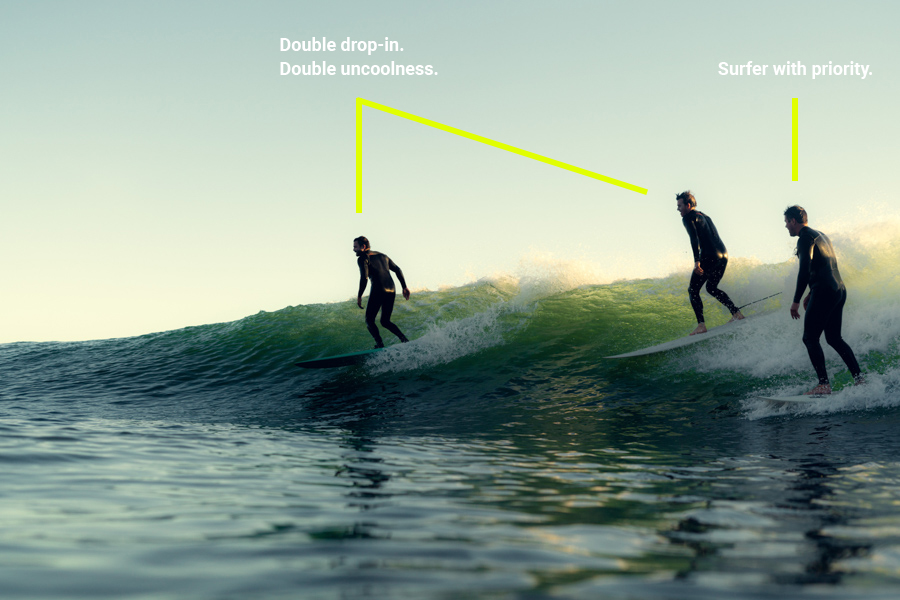
First of all, the surfer who has been waiting longest and/or is deepest on the wave (closest to the peak and able to stand up first) typically has priority. If you see someone deeper than you taking off on a wave (or already riding it), they have priority, so you should not take off in front of them. This is called burning, snaking, or dropping in, and it is never good form. Avoid doing so at all costs.*
As you can see in the photo above, the two surfers who dropped in on this wave are completely in the way of the surfer with priority, preventing him from progressing down the line and surfing the wave how he wants. Dropping in not only ruins the Priority Surfer’s wave, but it can also be dangerous.
Always look over your shoulder toward the peak (where the wave is breaking) before paddling into a wave to see if there is another surfer already on the wave. Being aware of your surroundings and looking down the line is an absolute must to avoid dangerous collisions, avoid ruining other surfer’s waves, and generally pissing people off.
If you take off on a wave and realize that you accidentally dropped in on someone, get off the wave as soon as you can. The best way to do this is to kick out, which means to go over the shoulder and off the back of the wave.
* An exception to this is when friends purposely take off on the same wave and surf the wave at the same time. This is called a “party wave.” When you’re just learning how to surf, you’re not going to be able to maneuver all that well, so avoid party waves until a bit later in your surfing journey!
Stay Out of the Way
If you see someone riding or paddling for a wave, it is your responsibility to get out of their way. As you get more comfortable in the water, you will begin to understand the waves better and be able to anticipate where the wave (and surfer) will pass you. This will enable you to decide if you should paddle toward the shoulder of the wave, or if you need to paddle deeper than the riding surfer and take the wave on the head in order to get out of their way.
When you are first learning, the best policy is always to paddle out through the channel, rather than trying to punch through breaking waves, which are likely to have riders on them.
Communicate
Communicating with the other surfers in the lineup is a great way to make sure that you don’t get in someone’s way. If in doubt, ask someone if they are going (rather than simply assuming they aren’t, and then accidentally burning them). If you accidentally drop in on someone or get in their way, paddle over to them (once you are both in a safe part of the lineup) and apologize.
If they get aggressive with you (which they might — some surfers are known to be total dickheads), simply apologize again and then paddle away. If you are getting yelled at as a beginner, you should probably assume that you did something wrong, so don’t get defensive and aggressive. Surfing is supposed to be our escape from anger and violence, so try not to feed into that in the water. If the other party gets aggressive, that’s their problem. Just kindly apologize, move away from them, and stay out of their way.
Don’t Back-Paddle
We touched briefly on back-paddling earlier, although it’s not something that will be a major consideration until you are a good enough surfer to sit in the main pack and compete for waves. While people move around in the lineup all the time, and often jockey for position, it is generally considered bad form to paddle past someone and then sit directly on them (indicating that you believe you have priority).
Although every situation is different, generally speaking, the person who has been waiting the longest is the person with priority, and then will often be the person who is farthest out and deepest. Paddling past them (back-paddling) is greedy and rude.
How to Surf
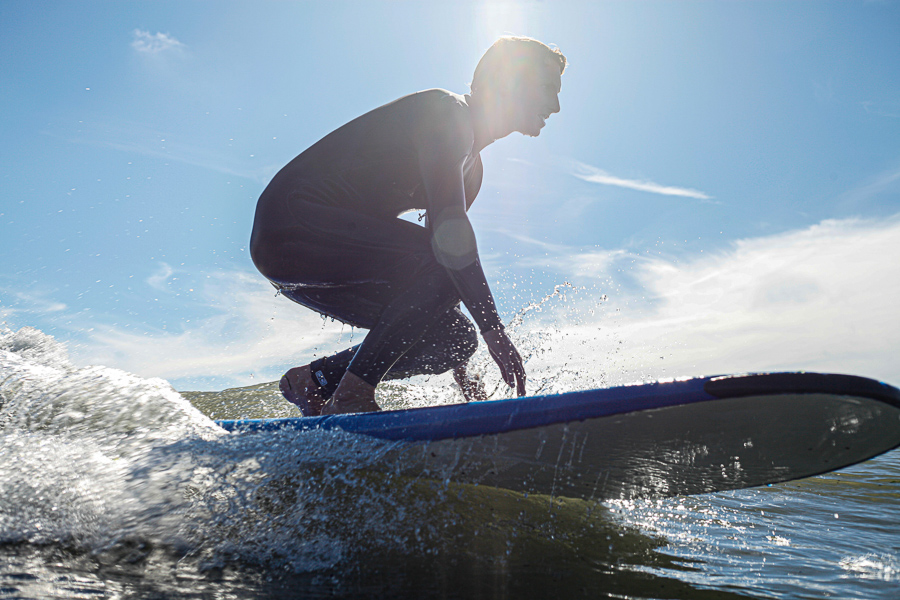
1 • Get the Proper Equipment
Find yourself a good beginner surfboard with lots of volume that makes it easier to paddle and balance.
2 • Choose the Right Surf Spot
We highly recommend taking some surf lessons to build a good foundation for continuing to learn and improve on your own. If you’re taking lessons, the instructor will take you to the best surf spots for beginners. If you’re venturing out on your own, ask the staff at your local surf shop what the best beginner wave is—preferably a soft, gentle wave with a well-defined channel.
3 • Practice on Land
Even though it feels sort of silly, spend a few minutes practicing popping up on your board on the beach before paddling out. If you are shy about practicing in public, you can practice at home and pretend your yoga mat is your board.
4 • How to Paddle
Beginners tend to be stiff and inefficient when they paddle. Try to loosen up your shoulders, elbows, and wrists, and don’t worry about making close-fingered paddles with your hands. Arch your lower back a bit to help redistribute the weight back on the board, as this will allow you to lie farther forward without pearling (sinking the nose).
The farther forward you can lie on the board, the faster you will paddle. Finally, even if it feels awkward when you are first learning, paddle with one arm at a time, never two arms together. Two-armed paddling is inefficient and a bad habit to get into.
5 • How to Get Through Waves
Ideally, you will be in the channel when you paddle out and won’t have to take waves on the head. Eventually, however, you will end up facing down a roaring wall of whitewater and have to find a way to get through it.
First of all, always make sure your board is perpendicular to the breaking wave, not parallel to it. You want to face the wave straight on, with the nose of your board pushing straight through the whitewater or lip. If it is a small wave, you may be able to push up on your board with your hands so that your chest rises off the deck, and the board will pop over the wave.
If the wave or whitewater are more than a foot or two high, you will either need to duck dive or turtle. Duck diving is when you push the nose down underwater with your hands, and then push the tail down with your foot, so that you can dive under the wave without losing your board or slowing down your paddling.
Duck diving takes a lot of practice, and only works on shortboards. If you’re on a longboard or funboard, the best option is to turtle, which involves paddling straight toward the breaking wave (board perpendicular to the wave, as always), then flipping over at the last minute so that your board is upside down and you are underneath of it in the water. Hold onto the rails tight, let the wave pass over you, then roll back over, climb on your board, and keep paddling.
6 • How to Catch a Wave
When it comes time to catch a wave, turn your board toward shore, look over your inside shoulder toward the breaking curl of the wave, and paddle, timing your entry into the wave so that it is just about to break as you paddle in. Keep paddling until you feel your board lift up the face and begin to accelerate, then pop up. This is quite difficult to learn, and will take a lot of practice.
7 • How to Pop-up on a Surfboard
Once you have caught the wave and feel your board accelerating, pop up by pushing down on the deck of your board with both hands and jumping to your feet in one smooth motion. This will also take a lot of practice, but the important thing is to practice doing it right, and not developing bad habits.
Don’t get in the habit of crawling up to your surf stance one foot at a time, as this is not a good habit to form early on. Commit to learning the standard pop-up try to get to your feet quickly and smoothly. If you watch the pros, some might land on both feet at the same time, while many others plant their back foot microseconds before their front foot. Also, you should always pop up with your feet perpendicular to the stringer of the surfboard with the front foot usually slightly angled forward at about a 45 degree angle, so that one leg is back and one leg is forward. There are several different pop-up techniques you can try depending on your ability and fitness, watch some videos on YouTube for reference.
8 • How to Ride a Wave
Once you pop up and have a sturdy stance on the board, you are surfing! In your first few sessions, you will likely only be doing this in whitewater, and probably will only ride straight toward shore. Once you become proficient at catching green-faced waves before they break and popping up efficiently, you can start to turn toward the shoulder and ride down the line.
This will make your ride much longer and more fun! Keep a relaxed stance, with your knees and hips loose. Stand up relatively straight, and remember to bend from the knees and not from the waist. Finally, when you want to turn, remember that the torso goes where the head goes, the hips go where the torso goes, and the legs go where the hips go. In other words, turning should be a full-body maneuver. Look where you want to go, and use your body to turn your board.
Surfing Safety
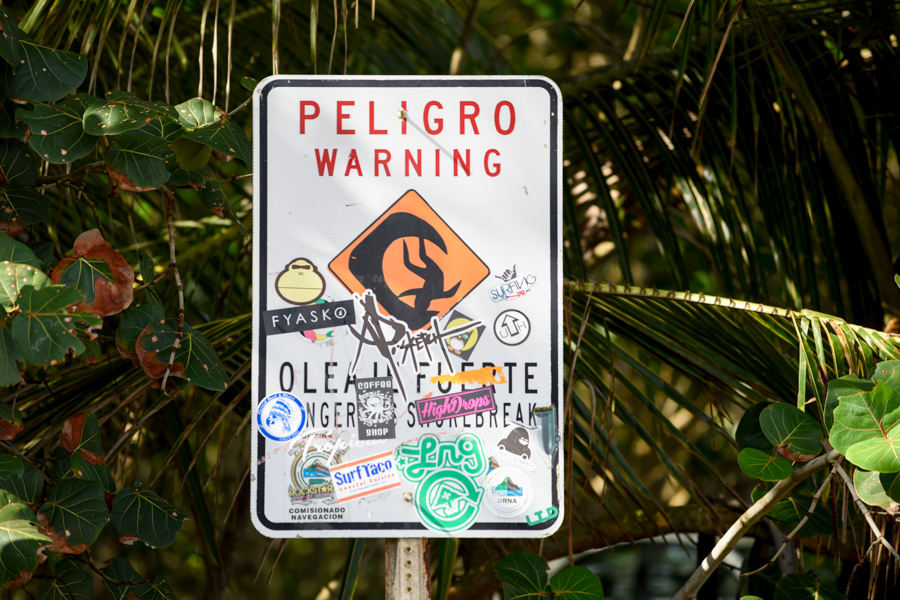
The ocean can be a very dangerous place, so it is important to take note of any hazards before going surfing. Check your weather forecast to see what the UV rating is for the day, and make sure to use sunscreen accordingly. Also, check to see if any jellyfish or other stinging/biting critters are predicted.
Check the local surf forecast for the day via a good surf report platform (like Surfline or Magic Seaweed) to make sure the swell isn’t going to increase abruptly while you are out in the lineup, and only paddle out in conditions you are confident you can handle. Before paddling out, take note of any geographic hazards, such as rocks, jetties, piers, and river mouths.
Finally, observe the conditions to see where the waves are breaking and which direction the current is flowing, then decide accordingly where the safest place is to paddle out. While in the water, keep an eye on your fellow surfers, and make sure that there is always someone within sight or at least within hearing distance, in case you find yourself in trouble. Finally, if possible, always surf with a buddy.
Surf Camps
As mentioned quite a few times, learning how to surf is a challenging pursuit (no matter how athletic or gifted you are in other sports). It’s not only challenging because you’re trying to balance on a moving, shifting wave, but also because you will need to learn to read the ocean and the ocean is always changing.
One way to set yourself up for success and build a solid foundation is to take a surf trip to a surf camp, or arrange a private surf retreat. Surf trips aren’t only for more advanced surfers! Beginner surfers can benefit greatly from going on a surf trip — and of course, have a super fun vacation along the way.
Now, if surf camp sounds like a place sans amenities where you’d send a 12-year-old, think again. Today, surf camps for adults come in all forms — from modern budget-friendly spots to luxury all-inclusive surf and yoga stays with all the bells and whistles. AKA surf retreats, or even surf resorts — ‘surf camp’ is just shorthand for: an accommodation where the focus is on surfing and the stay typically includes surf lessons or surf guiding.
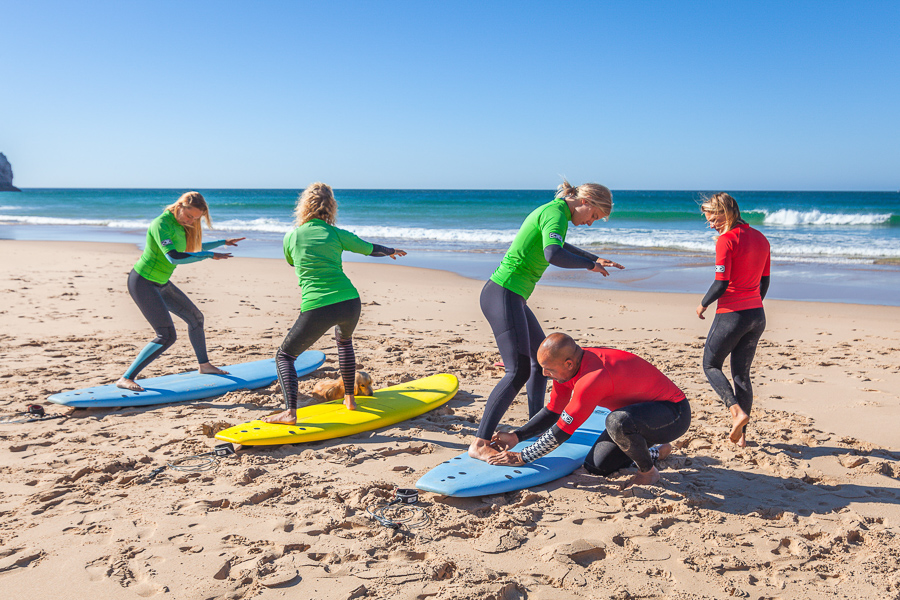
Many surf camps/retreats are all-inclusive (or mostly inclusive) to include meals, lessons, equipment, yoga, and a loose schedule that involves plenty of surf time (and chill time!). With everything taken care of, you don’t have to do much planning or handle any logistics so you can just focus on learning how to surf and having a great time.
Surf camps are an awesome trip for surfers of any ability, but especially for beginner surfers because you’ll get daily surf lessons that will help you build a solid foundation, and guidance from surf coaches every step of the way.
Especially big bonus: Many surf camps are located in beautiful, often tropical destinations, and surf areas are typically pretty great places to hang out. Can you tell we’re fans of surf travel? Ask any surfer and they will likely agree — surf trips are the bee’s knees. Check out our Surf Resort Guide and explore the best surf camps out there.
Surf Camps for Adults >>
Beginner Surfer FAQ
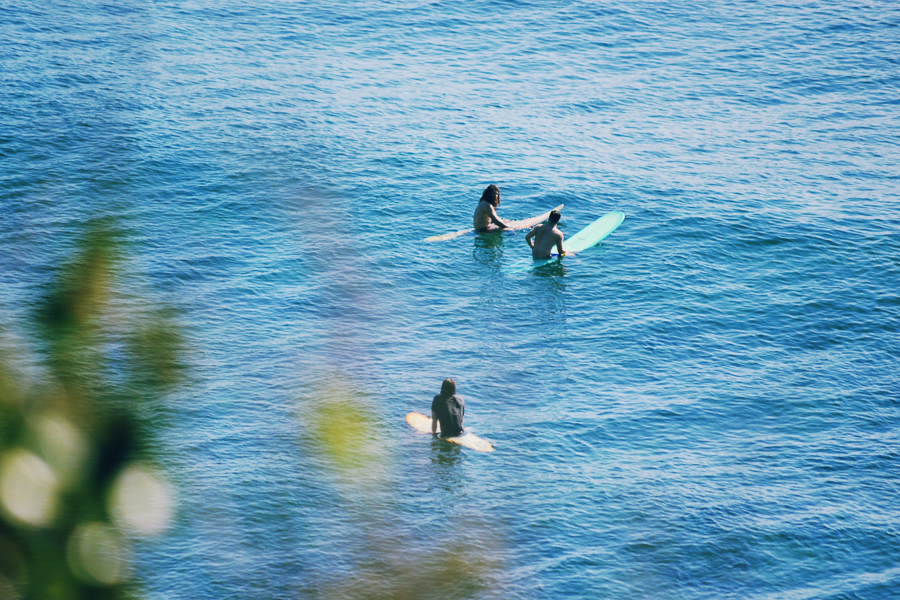
What is the best surfboard for beginners?
The best surfboard for beginners is either an entry-level longboard or a soft top. If you can find one, a soft top that is also a longboard (9’0″ or bigger) is best! Check out this guide to the best surfboards for beginners.
How can I get better at surfing faster?
The best way to get better at surfing faster is to go as often as possible. If you only go once per month, you are never going to progress. Generally speaking, if you want to see consistent and relatively quick progression, you should aim to surf at least three times per week. Also, find a board with lots of volume that helps you paddle into waves, and choose waves that are user-friendly and good for beginners. The more waves you can catch, the faster you will learn.
One of the best ways to speed up your surf skills is to go on a surf trip to a surf camp. Daily surf lessons and coaching will give you a solid foundation and help you make some serious progress. Going to a surf camp for a week or more is one of the very best ways to get better at surfing faster. Bonus: you get to have an awesome vacation! Check out the Best Surf Camps >>
Is it hard to learn how to surf?
Learning to surf is one of the most challenging things you are likely to ever attempt, but it is also one of the most fulfilling. Expect to struggle at first, but don’t give up. You will get it eventually, and when you do, it will be more than worth it!
Do I need to take surf lessons, or can I teach myself how to surf?
A surf lesson can be helpful your first time, as it can help you learn the basics. A friend who is an experienced surfer can also give you the same tips if they are patient and a good teacher. That being said, the best way to learn how to surf is to just practice and practice and practice, so after several lessons, you should just keep paddling out and trying.
One benefit of a surf lesson is that your surf instructor will often push you into waves, which means you will catch a lot more waves than you normally would on your own as a beginner. Timing the waves and paddling into them is one of the hardest parts of surfing, so if someone can push you into the waves instead, you will have many more opportunities to try to stand up on your board and actually surf, which will probably get you more stoked than simply trying to paddle into waves and getting run over by them instead.
But it is important to remember that you are going to have to learn how to paddle into waves someday—so unless you plan on paying surf instructors to push you into waves every time you paddle out, it’s best not to become too dependent on them. Your first session when you are getting pushed into dozens of waves might be super fun, but the next time you go out by yourself you might not even catch a single wave. Don’t lose the stoke! Eventually, you will learn to read the ocean better and be catching lots of waves on your own.
How long does it take to learn how to surf?
Many people think they have “learned to surf” after one lesson because they got pushed into a few waves and stood up in the whitewater. But to actually become proficient at paddling, catching waves, and riding down the line on them takes a lot of time and effort.
With a big board and soft waves, you should expect to catch a few waves and maybe stand up in the whitewater after one to two sessions; catch waves and stand up in the whitewater consistently after around five sessions; catch open-faced waves after 5-10 sessions; and start to go down the line at 10-15 sessions or so. From there, you have a lifetime’s worth of progression to pursue!


Want to get better at surfing faster? Go on a surf trip to a surf camp! Surf camps are the best way for beginners to progress at surfing because you’ll get daily surf lessons and guidance from surf coaches every step of the way. Check out The Best Surf Camps >>



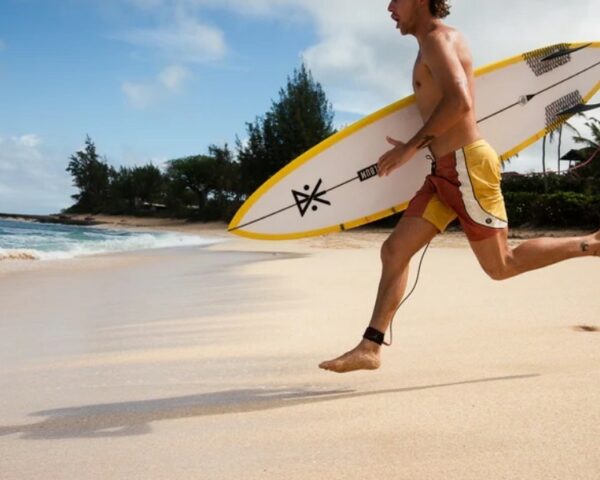

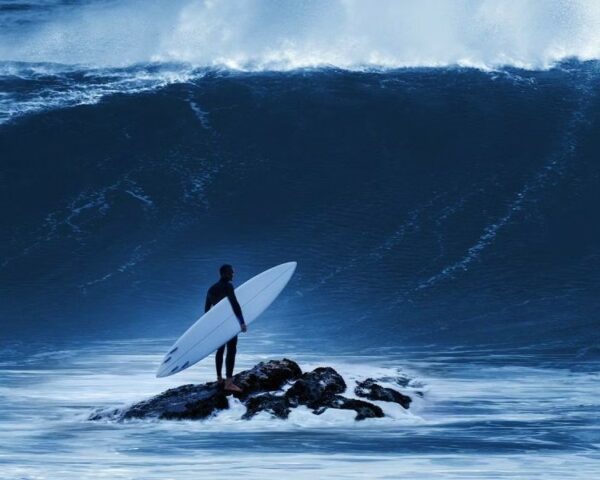

I think as a beginner, you should choose little crowded place.
Yea, for sure, it’s always a good idea as a beginner to learn the ropes where there are less crowds and more mellow lineups.
Thanks for the guide
What is the ocean temperature in November off the coast of los angeles? Will I need a wet suit?
Hi Jamee – Ocean temps can definitely vary quite a bit depending on the swells and weather trends, but typically the ocean temperature around Los Angeles in November is around 60 – 63°F (15 – 18°C). Most people would want a wetsuit to be comfortable and spend time in these water temperatures, so yes, I’d recommend a wetsuit.
The ideal wetsuit for you depends on your tolerance to cold, but typically, a good 3/2 wetsuit would be good at this time of year and could take you all through the winter in southern California. For the lowdown on wetsuits, check out: Guide to Men’s Wetsuits and Guide to Women’s Wetsuits. Cheers